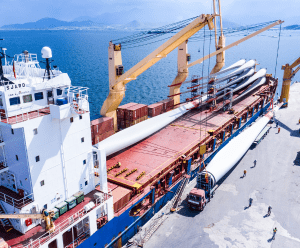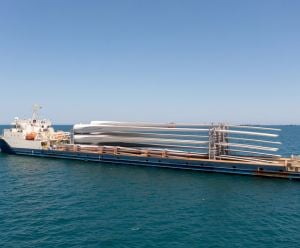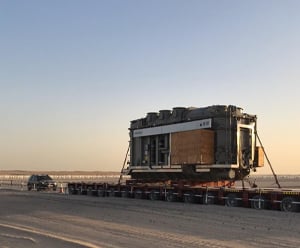
Understanding the basics of breakbulk shipping

Breakbulk shipping, as its name suggests, is a shipping technique that breaks up the bulk and transports large cargo as individual pieces rather than being shipped in containers.
It is widely used by businesses to transport bulky goods such as windmills. In 2022 alone, the Transnet National Ports Authority in South Africa processed 5.6 million metric tons of breakbulk cargo, marking a 50 percent increase compared to 2021.
Breakbulk shipping is prolifically deployed in the U.S. as well, with the Port of Los Angeles recording 748,652 metric tons of recycled metal exports and 1,053,088 metric tons of bulk steel imports in 2023.
Shipping it piecemeal is the way to go
Primed to transport oversized and heavy cargo that cannot fit into containers, breakbulk shipping enables businesses to transport heavy and unwieldy cargo around the world efficiently at lower costs.
Breakbulk cargo points, or breakbulk terminals, are utilized to facilitate the breakbulk shipping process. These strategic locations, outfitted with specialized equipment and skilled staff to manage breakbulk shipping, are purpose-built to accommodate heavy and oversized cargo.
By using these points to handle bulky cargo, businesses are able to load their shipments onto ships with greater efficiency and at reduced risk of damage. This also leads to faster handling times, translating into economies of scale and reduced transportation costs.
Breaking the bulk to ship with ease
Cargoes that are designed to be easily dismantled and reassembled are ideal for breakbulk shipping, allowing them to be transported safely and securely across the ocean.
Aside from obvious candidates such as heavy machinery and construction equipment, other examples of non-containerized cargo (NCCs) include oil and gas equipment, windmills, yachts, oversized vehicles, boats, cranes, turbine blades, ship propellers, generators, and large engines.
Taking the cargo apart: The process
How does breakbulk shipping work? Transporting large and robust cargo often requires specialized care during transportation.
The process begins with pre-loading preparation, where measurements and assessments are meticulously performed before loading cargo onto the vessel. Some key metrics that are considered include the ship’s capacity, the cargo’s weight, and dimensions.
Breakbulk shipping often involves using specialized lifting equipment like cranes and forklifts to safely maneuver oversized items aboard the ship.
Once the cargo is in place, securing beams, slings, and chains are deployed to fasten the items to the ship’s deck and prevent them from moving under turbulent conditions.
The cargo is then distributed across the ship according to a stowage plan, taking into account various factors like weight distribution, stability, and the requirements of different cargo types.
During transit, the cargo is monitored by a dedicated team of ship personnel who ensure all potential issues are swiftly identified and corrected.
Breakbulk to haul the bulk
Given the upward trend of main bulk cargo in international seaborne trade with at least 3.3 billion metric tons recorded in 2021, now more than ever, it is essential for breakbulk shipping to be utilized to ensure their safe and efficient transit across the seas.
By deploying breakbulk shipping, businesses are empowered to ship large machinery, construction equipment, and other specialized bulky components at a fraction of the cost they would otherwise incur.
ALSO WORTH READING

















 English
English